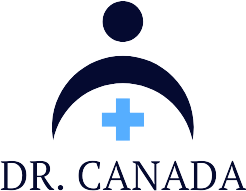Mastitis is a common and often painful condition that can affect breastfeeding mothers. Understanding the symptoms, causes, and risk factors of mastitis is crucial in order to effectively diagnose and treat the condition. In this article, we will explore the various aspects of mastitis, including how to recognize the symptoms, what causes it, and who is at risk. We will also discuss strategies for diagnosing and treating mastitis, as well as tips for prevention and management for nursing mothers. By gaining a better understanding of mastitis, we can empower mothers to effectively navigate this challenging aspect of breastfeeding.
1. Understanding Mastitis: Symptoms, Causes, and Risk Factors
Mastitis is a common condition that affects breastfeeding women, characterized by inflammation of the breast tissue. It can be caused by a variety of factors, including blocked milk ducts, bacteria entering the breast through cracked nipples, or a buildup of milk in the breast tissue.
Symptoms of mastitis typically include redness, swelling, pain, and warmth in the affected breast. Some women may also experience fever, chills, and flu-like symptoms. Mastitis can be quite painful and uncomfortable, making it important to seek treatment as soon as possible.
There are certain risk factors that can increase the likelihood of developing mastitis. These include improper breastfeeding technique, wearing tight-fitting bras or clothing that puts pressure on the breasts, and having a history of mastitis or breast infections. It is important for women to be aware of these risk factors and take steps to prevent mastitis from occurring.
Overall, understanding the symptoms, causes, and risk factors of mastitis is crucial for early diagnosis and treatment. By recognizing the signs of mastitis and seeking medical help promptly, women can effectively manage this condition and prevent complications.
2. Diagnosing and Treating Mastitis: Effective Strategies for Relief
Diagnosing and treating mastitis is crucial for relieving symptoms and preventing complications. The diagnosis of mastitis typically involves a physical examination by a healthcare provider, who may also order a breast ultrasound or mammogram to confirm the diagnosis. In some cases, a sample of breast milk may be tested to rule out other possible causes of symptoms.
Once mastitis is diagnosed, treatment usually involves a combination of methods to relieve symptoms and eliminate the infection. Antibiotics are commonly prescribed to treat the bacterial infection causing mastitis. It is important to complete the full course of antibiotics as prescribed by a healthcare provider to ensure the infection is fully eradicated.
In addition to antibiotics, other strategies for relieving symptoms of mastitis include:
1. Applying warm compresses to the affected breast to help reduce pain and swelling.
2. Massaging the affected breast while nursing or pumping to help clear blocked milk ducts.
3. Ensuring proper breastfeeding technique to prevent further complications.
4. Resting and staying hydrated to support the body’s immune system in fighting off infection.
If symptoms persist or worsen despite treatment, it is important to follow up with a healthcare provider for further evaluation and possible adjustments to the treatment plan. With prompt diagnosis and appropriate treatment, most cases of mastitis can be effectively managed, allowing breastfeeding to continue without interruption.
3. Prevention and Management of Mastitis: Tips for Nursing Mothers
Prevention and Management of Mastitis: Tips for Nursing Mothers
While mastitis can be a painful and frustrating condition for nursing mothers, there are steps that can be taken to prevent and manage it effectively. Here are some tips for nursing mothers to help prevent and manage mastitis:
1. Proper Latching: Ensuring that your baby is latched on correctly while breastfeeding can help prevent mastitis. A good latch can help prevent milk from building up in the breast and becoming blocked, which can lead to mastitis.
2. Emptying the Breast: Make sure to empty your breasts completely during each feeding to prevent milk from getting backed up and causing a blockage. If your baby isn’t able to empty the breast fully, consider using a breast pump to help with milk removal.
3. Avoid Tight Clothing: Wearing tight bras or clothing can put pressure on the breasts and potentially lead to blocked milk ducts. Opt for comfortable, supportive bras that don’t constrict the breasts.
4. Rest and Relaxation: Stress and fatigue can weaken the immune system and make you more susceptible to mastitis. Make sure to get plenty of rest, eat a healthy diet, and practice relaxation techniques to help prevent mastitis.
5. Proper Hygiene: Keep your nipples and breasts clean to prevent infection. Wash your hands before breastfeeding and make sure to wash your breasts with warm water and mild soap.
6. Seek Help Early: If you notice any symptoms of mastitis, such as redness, swelling, or pain in the breast, seek help from a healthcare provider immediately. Early treatment can help prevent the condition from worsening.
By following these tips, nursing mothers can help prevent and manage mastitis effectively, allowing them to continue breastfeeding their baby with ease and comfort. Remember, if you have any concerns or questions about mastitis, don’t hesitate to reach out to a healthcare provider for guidance and support.

